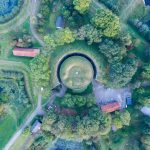Table of Contents
- Benefits of Enhancing Your Outdoor Space
- Planning Your Outdoor Space Design
- Choosing the Right Materials
- Incorporating Plants and Greenery
- Selecting Outdoor Furniture
- Effective Outdoor Lighting Solutions
- Seasonal Maintenance Tips
- Sustainability Considerations
Benefits of Enhancing Your Outdoor Space
Improving your outdoor space can drastically enhance your quality of life. Well-designed areas add to the aesthetic appeal and increase property value. According to The New York Times, having functional outdoor spaces can significantly impact your living experience. Creating an attractive garden or patio can provide a retreat from the hustle and bustle of daily life, offering a serene escape. Many prospective buyers imagine themselves in carefully designed environments, valuing the investment in your outdoor space.
Planning Your Outdoor Space Design
A successful outdoor space begins with careful planning. Begin by identifying the main objective of the space. Is it for entertaining, relaxation, or gardening? Consider factors such as space, budget, and climate. Additionally, those looking to increase their property’s market value will find that well-maintained areas attract more interest, similar to opportunities seen with homes for sale in Mount Dora, FL, Good planning ensures that your outdoor space is both functional and visually appealing. Think about how you want to use the space throughout the year and what elements are essential for your lifestyle. Create a design plan incorporating different zones for various activities, such as a dining area, a lounging section, and a garden bed. This approach maximizes the utility of the space and helps you stay organized during execution.
Choosing the Right Materials
The materials you choose for your outdoor area must be durable and weather-resistant. Popular options include natural stone, teak, and metal. Remember to balance aesthetics and functionality when selecting materials. For instance, natural stone can give a rustic look while incredibly robust. Teak is known for its longevity and resistance to weather conditions. Always check how maintenance-intensive a material is before finalizing your decision. Wooden materials may require regular sealing to prevent damage, whereas metals like aluminum might need occasional powder coating to maintain their appearance. Price is another aspect to take into account; although certain materials might be more expensive initially, they could end up being more cost-effective in the long run because of their longevity.
Incorporating Plants and Greenery
No outdoor area is complete without plants. They add color, texture, and life to your space. Select a mix of perennials and annuals to ensure your garden remains vibrant throughout the year. Perennials provide a stable foundation as they return yearly, while annuals can be swapped out for seasonal variation. The Royal Horticultural Society provides a wealth of information and tips on plant selection. Consider incorporating native plants requiring less water and care, making them more sustainable. Vertical gardens and potted plants can add a unique charm to your outdoor areas, and using a variety of plant heights and textures can create a more exciting and layered look. Don’t forget to think about bloom times to ensure there’s always something flowering in your garden.
Selecting Outdoor Furniture
Outdoor furniture should be comfortable and durable. Consider options like weather-resistant cushions and UV-protected fabrics. The furniture layout should complement the overall design and meet the functional needs of the space. Whether you prefer a modern look with sleek lines or a more traditional aesthetic, ensure that the furniture chosen fits the intended use of the area. Remember storage solutions for your furniture during off-seasons. Look for pieces that serve dual functions, such as benches with storage compartments, which can help keep your space tidy and organized. Materials like wrought iron, teak, and all-weather wicker can withstand outdoor conditions and retain their appearance, making them excellent choices for long-term investments.
Effective Outdoor Lighting Solutions
Good lighting transforms outdoor spaces, making them usable after dark. Opt for a blend of functional and ambient lighting to create a cozy atmosphere. Solar-powered lights can be an eco-friendly and cost-effective option. From pathways to string lights, the proper lighting can make your outdoor space more inviting. Consider motion-sensor lights for added security and convenience. Layering different types of lighting—such as task, ambient, and accent lighting—can enhance the usability and aesthetic of your outdoor areas. For example, task lighting is essential for cooking and dining spaces, while ambient lighting creates a warm glow for entertaining. Accent lights can highlight specific plants or architectural features, adding depth and interest to your design.
Seasonal Maintenance Tips
Maintaining your outdoor space is crucial for its longevity. Seasonal tasks such as cleaning, pruning, and furniture storage can keep your area looking its best. For an in-depth guide on seasonal maintenance, check out this HGTV article. Regular maintenance helps to prevent minor issues from becoming major repairs. Annual tasks include soil amendment, repainting fences, and checking the integrity of your hardscape features. In the spring, focus on preparing the soil and planting new additions. Summer is ideal for watering and pest control, while fall is the perfect time for pruning and preparing your garden for winter. Small, consistent efforts throughout the year will help ensure your outdoor space remains in top condition.
Sustainability Considerations
Sustainable practices can make your outdoor space more eco-friendly. Use recycled materials, rainwater harvesting, and native plants to reduce environmental impact. Simple changes can result in a greener, more sustainable outdoor area. For instance, composting garden waste and using organic fertilizers can significantly enhance soil health. Moreover, energy-efficient lighting and drip irrigation systems can save resources while maintaining your outdoor space’s beauty. Using permeable pavers can also help manage rainwater runoff, reducing erosion risk and waterlogging. Mulching around plants can help retain moisture and suppress weeds, reducing the need for chemical herbicides and frequent watering. By adopting sustainable practices, you create an outdoor space that’s beautiful and environmentally responsible.









